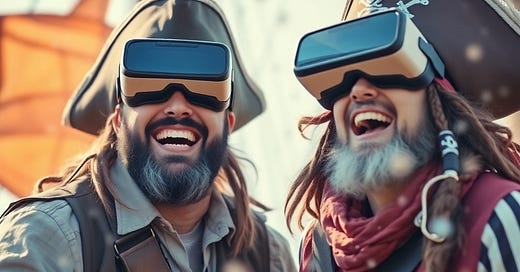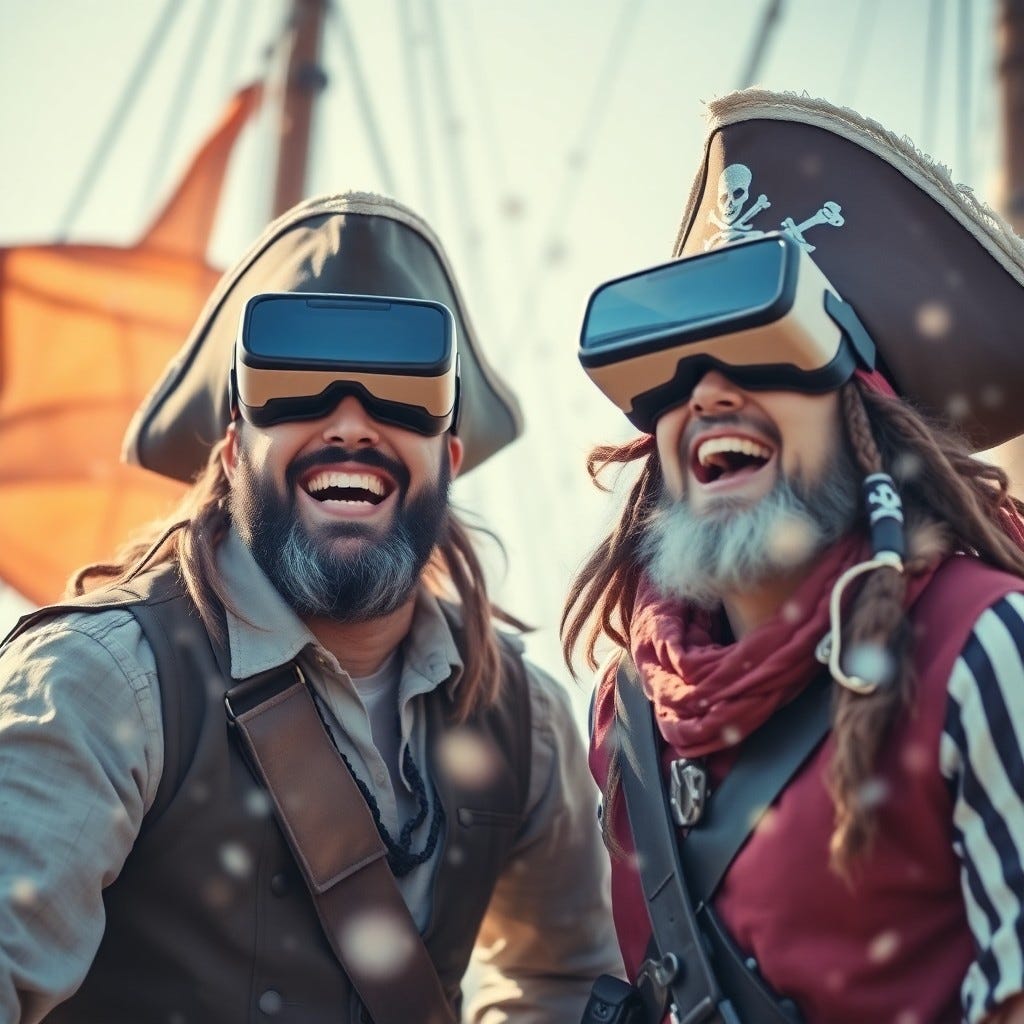The Fourth Industrial Revolution Is Rewriting the Future of Storytelling
The Birth of Living Stories, Part 1
Welcome to the Revolution! I’m glad you’re here.
Most revolutions are easy to recognize in hindsight. Steam. Electricity. Microchips. But the Fourth Industrial Revolution is harder to pin down—not because it’s invisible, but because it’s everywhere.
What defines this era isn’t a single invention, but a convergence of many: AI, blockchain, spatial computing, robotics, and real-time 3D. Together, these technologies are fusing the physical and digital realms, forming what the World Economic Forum calls "cyber-physical systems." But not all of these systems look like industrial robots. Some look like stories.
To understand what’s happening now, it helps to revisit what came before.
The First Industrial Revolution (1760s–1840s) mechanized production using steam power, transforming agriculture and manufacturing.
The Second (1870s–1910s) introduced mass production, electricity, and communication networks like the telegraph.
The Third (1950s–2000s) digitized work and life with computers, electronics, and the internet.
The Fourth (2000s–now) is blending those digital and physical systems—merging atoms with bits, bodies with data.
In most accounts, the endpoint of this fusion is often described in terms of robotics, automation, and intelligent infrastructure. But there’s another frontier where this merge is equally profound: storytelling.
Stories have always been a cultural operating system. In the 20th century, film and television became the dominant ways we shared those stories—physical productions rooted in live-action performance, physical sets, and linear timelines. In the 21st century, games became the digital counterweight—code-driven experiences rendered in real time, open to interaction and participation.
Now, these two traditions—filmmaking and game design—are beginning to blend. One represents the physical storytelling tradition; the other, the digital. Their convergence forms a new modality, one of the clearest byproducts of the Fourth Industrial Revolution: the Hybrid Real-Time Studio (HRTS).
Hybrid Real-Time Studios aren’t a shift in format. They’re a shift in ontology. These studios treat stories not as finished products, but as persistent, evolving platforms. They use real-time game engines, virtual production pipelines, and AI agents to create worlds where audiences don’t just watch or play—they live, participate, and co-create.
Why now? Because the Fourth Industrial Revolution isn’t just about making things smarter. It’s about collapsing boundaries—between disciplines, between creators and audiences, between media formats, between the physical and the digital. HRTS emerge from that collapse. They’re what happens when the grammar of games and the language of film begin to share the same vocabulary—rendering, rigging, mocap, simulation, world logic.
This convergence is also cultural. In the past, Hollywood and the tech world ran in parallel. But in a world of AI-powered agents, mocap-enabled actors, interoperable 3D asset pipelines, and decentralized storytelling platforms, those cultures are merging too. And with that merge comes the need for new workflows, new economic models, and new forms of collaboration.
Of course, these shifts raise difficult questions: What does authorship look like in a participatory storyworld? How do we compensate talent whose likeness may live beyond the set? What rights do fans have when remixing shared worlds? These are questions not just for technologists, but for unions, lawmakers, and creators alike.
But behind those questions lies a deeper opportunity. If we get it right, the Fourth Industrial Revolution won’t just build smarter factories or cities. It will build more meaningful storyworlds—places that are persistent, immersive, and deeply human. Places where storytelling becomes culture-and a form of infrastructure.
This is the promise of Hybrid Real-Time Studios. But more importantly, it’s the promise of a convergent world.
In the same way that factories became the defining infrastructure of the First Industrial Revolution, these new storyworlds—real-time, participatory, interconnected—may become one of the defining infrastructures of the Fourth.
Because the future of work isn’t just about automation. The future of play isn’t just about immersion. And the future of story isn’t just about consumption.
It’s about convergence. And it’s already here.
This is the world of Sector V. It’s the space between the 2D internet of today and 3D immersive web of tomorrow. Here the central focus won’t be on the technologies discussed above (there are wonderful blogs and newsletters that already cover those topics) but on how technology affects stories, communities, and world building. My goal with this newsletter is to link the worlds of technology and storytelling into something actionable. I hope, dear reader, that you find it insightful, if not valuable.
Best,
Charles Borland





